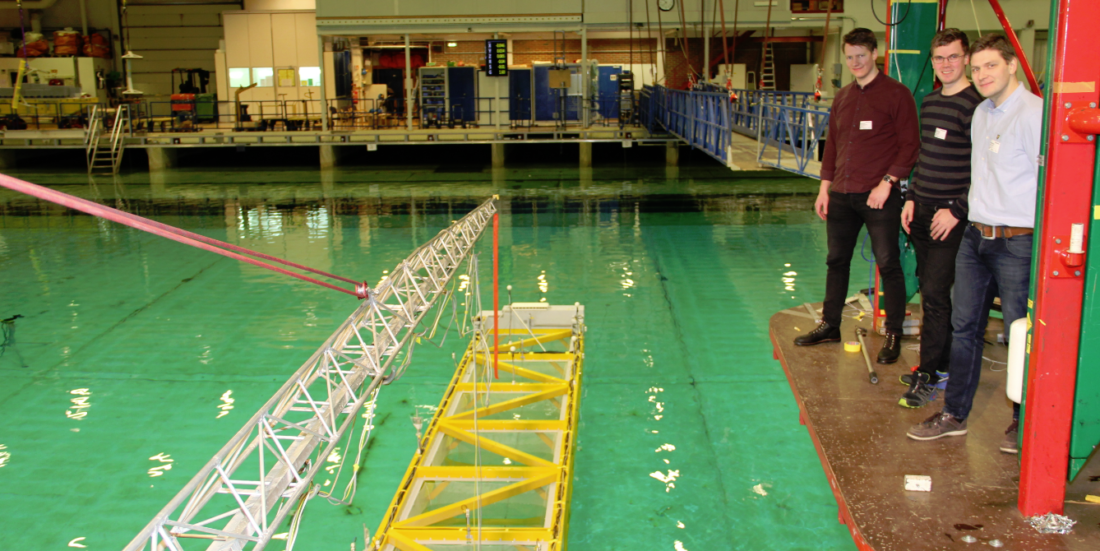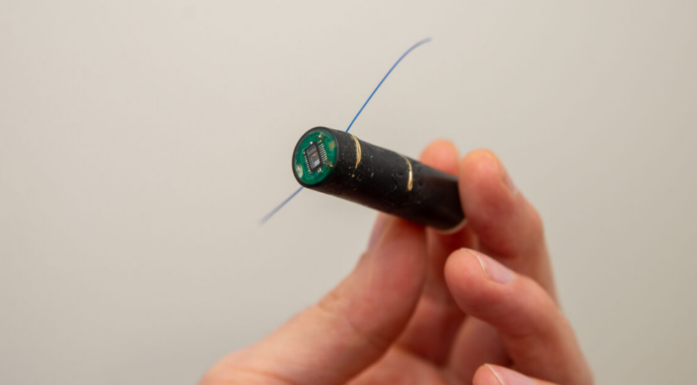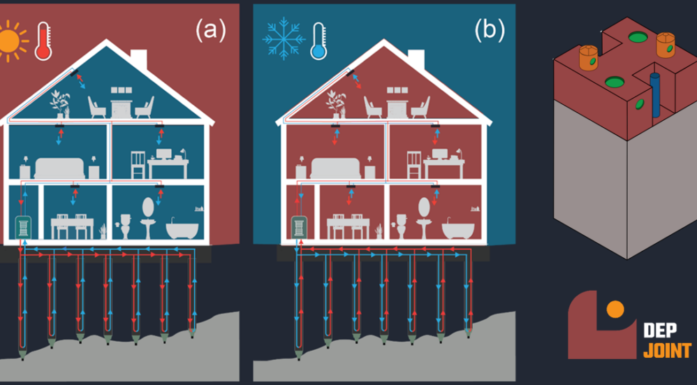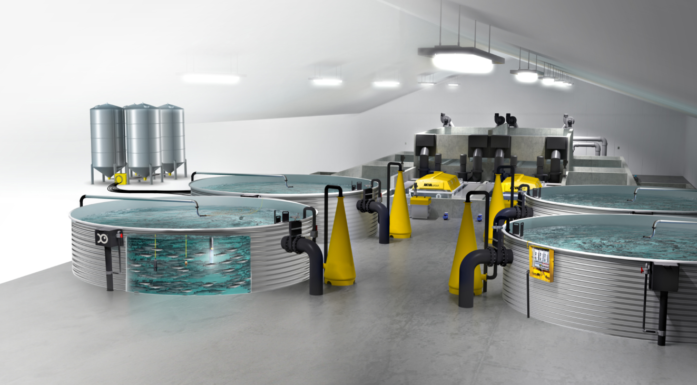Plans for a 385-metre fish farm facility in the open sea
An entirely new fish farm design, which looks more like an elongated offshore oil platform than a traditional aquaculture facility, may soon be installed in Norwegian waters.
A model of the “Ocean Farm” concept is now being tested at SINTEF Ocean’s Ocean Basin Laboratory, which in recent decades has been the test site for many floating oil installations. The aquaculture sector is now looking to install facilities further out at sea in order to have access to more space and cleaner water, and reduce the risks of salmon lice and disease infection.
“Our aim is to advance the aquaculture sector in a sustainable manner”, says Bjarne Johansen, who is a project manager at the aquaculture company Nordlaks, which is behind the project. “We believe that the key to achieving this is to exploit new and more exposed areas of the ocean”, he says.
Facts about the Ocean Farm concept
- The new Nordlaks facility will contain 10,000 tonnes of farmed salmon, amounting to as many as two million individual fish.
- It will be 385 metres long, and is being made possible with the help of development licences issued by the Norwegian Directorate of Fisheries.
- These licences are granted under a temporary scheme aimed at promoting innovative projects that require significant levels of investment.
- The Directorate had received 104 licence applications by deadline day in November 2017.
- Nordlaks has tested the design at SINTEF Ocean’s Ocean Basin Laboratory.
The main construction is made of steel and will contain six large nets, designed to house 10,000 tonnes of farmed salmon, amounting to up to 2 million individual fish. Out at sea, the facility will be as much as 385 metres long. The project was launched in response to the Directorate of Fisheries’ development licences scheme, which is a temporary arrangement involving the issue of special licences aimed at promoting innovative projects that require significant levels of investment. The Directorate had received 104 licence applications on deadline day in November 2017.
“Norway is a global leader in the development of large-scale salmon production facilities in exposed localities”, says Ivar Nygaard, who is a Senior Project Manager at SINTEF Ocean. “The Nordlaks project is the biggest aquaculture venture we have undertaken to date”, he says.
“However, we see a clear trend in enquiries from an increasing number of companies in the aquaculture sector, and we anticipate that there will be even more in the future as the number of licence awards increases”, says Nygaard, who in terms of technology, sees the new Ocean Farm construction as being on a similar level to the big oil platforms.
“The largest production vessel that I have been involved in testing was well over 400 metres long”, he says. “This construction is of the same order of magnitude, and says something about the scale of facility that the aquaculture sector is now investing in”, says Nygaard.
Designed to withstand 12-metre waves
Nordlaks is calling its unique aquaculture facility an “Ocean Farm” (havfarmin Norwegian). It is designed to withstand bigger waves and stronger currents than the conventional, flexible net-pens (nets suspended from flexible plastic rings) currently installed in Norwegian fjords. Current facilities in Norway are protected to some degree from the harshest conditions, being located either within sheltered fjords, or just a little offshore along the open coastline.
“The public authorities have declared their wish for growth in the aquaculture sector, and to achieve this we have to exploit more exposed marine localities”, says Johansen. “This requires entirely different materials and construction techniques than those we use for fjord-based facilities”, he says.
The rectangular steel construction will be built in China before being put to sea about five kilometres south-west of Hadseløya in the Vesterålen islands. Computer simulations have already been carried out, but Nordlaks wants to perform model tests on the construction in order to verify its in-house calculations.
“Performing calculations of the interaction between the fixed steel construction and its nets is very challenging”, says Project Manager Håkon Ådnanes at the company NSK Ship Design, which has designed the facility. “Because this is an entirely new concept, we have no previous practical know-how or experience, but we now intend to build up our knowledge base together with SINTEF”, he says.
Rail-based service vehicles and a “hotel”
A representative from the Norwegian Directorate of Fisheries was present to view the pilot project tests.
“This facility exhibits a high level of innovation and has thus been judged as meeting our licence award criteria”, says Pål Alexander Fossan, who is an adviser at the Directorate. “I think it’s very interesting to be present during the tests”, he says.
An important component of the Ocean Farm concept is the two service vehicles that travel along rails on the sides of the installation. These will be operated by personnel who live on the facility, in much the same way as workers on today’s oil installations.
“Our main aim is to achieve secure and efficient salmon production”, says Johansen from Nordlaks. “We plan to deliver the fish to the facility when they weigh about 1 kilo, and expect them to be ready for slaughter within a year”, he says.
“How harsh will weather conditions be offshore the Vesterålen islands?
“We’ve taken wave measurements in the area over a period of a year, and the highest have been about 8 metres”, says Johansen. “As part of the model experiments, we’ve tested the construction for 100-year waves of up to 12 metres in height, so the design will be robust under very harsh weather conditions”, he says.
“Will the fish be able to withstand these conditions?
“Good fish welfare has been a fundamental consideration ever since we initiated this project”, says Johansen. The Ocean Farm facility is designed to withstand the stresses on the construction expected at an exposed location, while at the same time protecting the fish from the forces of nature”, he says. “The facility will contain large fish and, naturally, we will assign priority to the monitoring and recording of fish welfare during the pilot phase”, he concludes.





